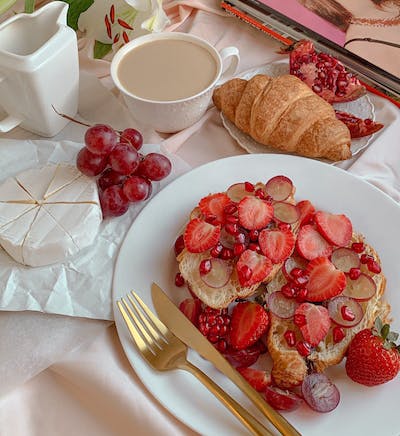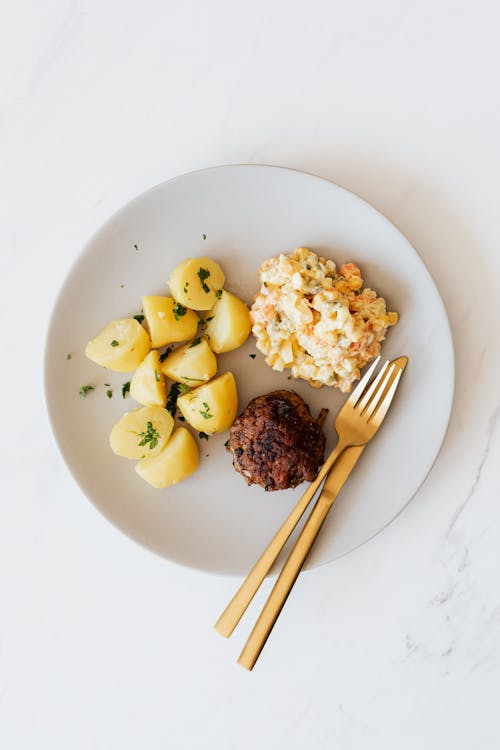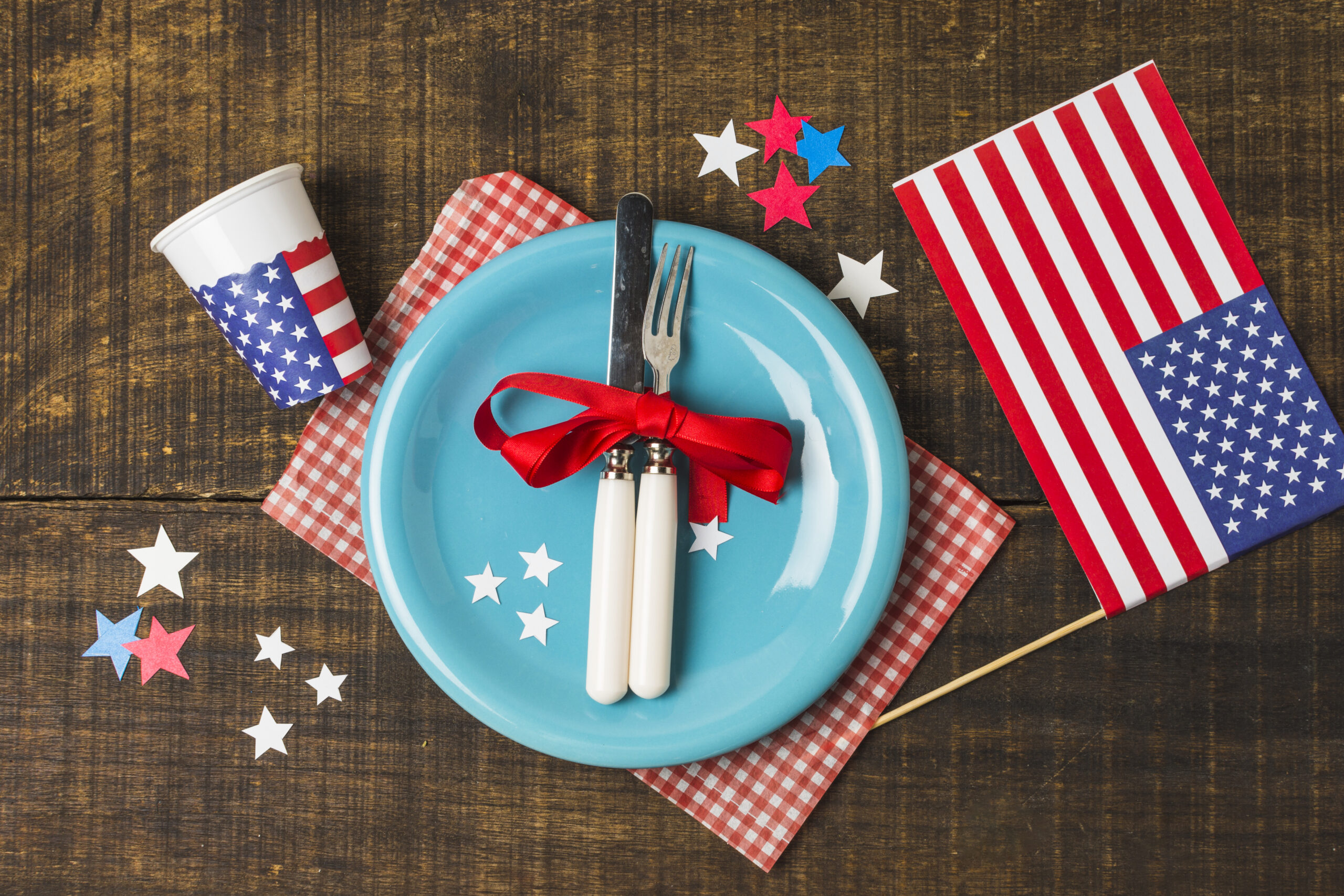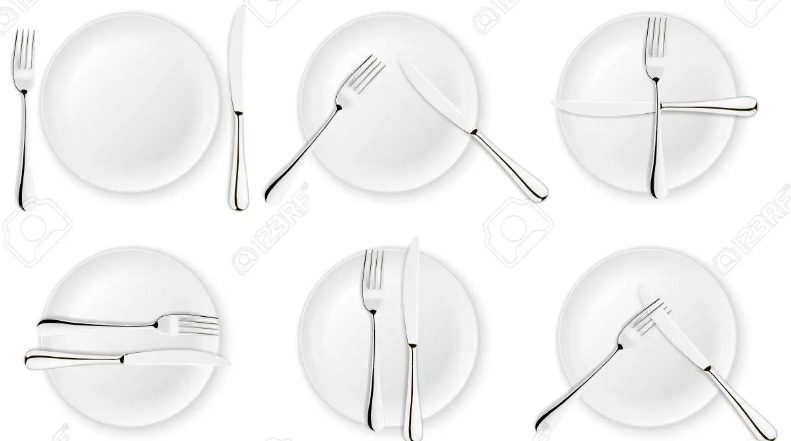Position Of Spoon And Fork After Eating: A Guide to Etiquette

When dining in a formal setting, it’s crucial to follow certain dining etiquette to show respect for your fellow diners and create a pleasant atmosphere. One aspect that can often confuse people is the correct position of the spoon and fork after eating a meal. In this article, we’ll explore the basics of proper utensil placement, how to place spoons after eating, and why it matters.
Read More: About Table Manners that you Need to Master
The Basics of Position of Spoon and Fork After Eating⤵️
When it comes to positioning your spoon and fork after eating in a formal setting, there are two fundamental rules to follow:
Rule 1:
The first step in proper utensil placement is to remove any used cutlery from your plate. If you have used a knife during the meal, place it across the top of the plate with the blade facing inward towards the center of the plate. This indicates to the waitstaff that you have finished using the knife, and it can be cleared away.

Rule 2:
If you did not use a knife during the meal, simply place both the spoon and fork side by side on either side of the plate. This position indicates that you have finished eating and that the plate can be cleared away.

The tines (prongs) of the fork should always be facing up while resting on the plate; similarly, spoons should be placed upside down so that their bowl faces upwards.

Once you have removed any used cutlery from your plate, it’s time to position the remaining utensils correctly. The fork should be placed on the left side of the plate with its tines facing upward. This position is not only aesthetically pleasing but also practical, as it makes it easier for the waitstaff to clear the plate without having to move the utensil around.
Tips for Navigating Different Dining Scenarios
While the basic rules for utensil placement are the same across all formal dining situations, there are a few variations to keep in mind when dining in different settings.
↳Place Utensils Diagonally on the Plate:
When dining in a French or Continental style, the fork and knife are placed diagonally on the plate. The fork is placed on the left side of the plate with its tines facing upward, while the knife is placed on the right side of the plate with its blade facing inward. Also, the blade of the knife should rest on the edge of the plate, while the handle should extend toward the center.
↳Leave Utensils on the Plate:
In a European style of dining, it is common to leave your utensils on the plate when you are finished eating. This indicates to the waitstaff that you have finished and that the plate can be cleared away. In this case, the fork and spoon should be placed side by side on either side of the plate, with the fork on the left and the spoon on the right. Lastly, the tines of the fork should face up, while the bowl of the spoon should face up as well.
Use the “Resting Position” For a Brief Pause:
If you need to take a brief break during the meal, you can use the “resting position” for your utensils. This involves placing the knife across the top of the plate with the blade facing inward and the fork placed next to it, tines up. Moreover, the spoon should be placed next to the knife, with the bowl facing upward. Lastly, this position indicates to the waitstaff that you are not finished with your meal, but that you are taking a break.
↳Positioning Utensils for Buffet-Style Dining:
In a buffet-style dining situation, the rules for utensil placement are a bit different. You should place your used utensils on the side of your plate or bowl, rather than on top of it. This allows the waitstaff to easily determine which dishes need to be cleared and which are still in use.
2. Why Does the Proper Position of Spoon and Fork After Eating Matter?
Properly positioning your spoon and fork after eating is not only a matter of good etiquette, but it also shows respect for those around you. By taking the time to position your utensils correctly, you demonstrate your consideration for your fellow diners and create a pleasant atmosphere.
Additionally, proper utensil placement makes it easier for the waitstaff to clear away dishes without having to move or adjust anything unnecessarily. This, in turn, helps ensure that all plates can be cleared at once instead of one by one, which saves time during busy meals and allows the waitstaff to be more efficient.
Etiquette in Formal Settings
Etiquette plays a crucial role in formal settings, helping to create an atmosphere of respect, professionalism, and consideration for others. Here are some key etiquette guidelines to keep in mind in formal settings:
➧ Dress Appropriately:
Follow the dress code specified for the event or occasion. Dressing in a manner that is respectful, neat, and appropriate shows your understanding and consideration for the formality of the setting.
➧ Punctuality:
Arrive on time or slightly before the designated start time. Being punctual demonstrates respect for others’ time and shows your commitment to the event or meeting.
➧ Greetings and Introductions:
When entering a formal setting, greet others with a firm handshake, a smile, and appropriate eye contact. Introduce yourself clearly and use proper titles and last names when addressing others. If you are unsure about how to address someone, err on the side of formality until given permission to use a more casual form of address.
➧ Active Listening:
When engaging in conversations or meetings, practice active listening skills. Give your full attention to the speaker, maintain eye contact, and avoid interrupting. Show genuine interest in what others are saying and respond thoughtfully.
➧ Table Manners:
If you are attending a formal dinner or business lunch, familiarize yourself with basic table manners. Use utensils appropriately, follow the lead of the host or hostess, and engage in polite conversation. Avoid talking with your mouth full or making loud or disruptive noises.
➧ Respect Personal Space:
Be mindful of personal space and avoid invading someone’s personal bubble. Give others the appropriate physical distance and respect their boundaries.
➧ Cell Phone Usage:
In formal settings, it is generally considered impolite to use your cell phone unless it is necessary for work or an emergency. Keep your phone on silent or vibrate mode and step outside if you need to make or take a call.
➧ Be Mindful of Language and Tone:
Use polite and respectful language when communicating with others. Avoid offensive or inappropriate language, sarcasm, or aggressive tones. Maintain a professional and courteous demeanor at all times.
➧ Follow Event Protocols:
If you are attending a formal event or ceremony, familiarize yourself with any specific protocols or guidelines. This may include standing or sitting during certain moments, applauding appropriately, or following specific procedures.
➧ Thanking Hosts and Organizers:
After attending a formal event or meeting, it is customary to send a thank-you note or email to express your appreciation for the invitation and the efforts of the hosts or organizers.
Remember, etiquette is about showing respect, consideration, and professionalism towards others. By practicing these guidelines in formal settings, you can contribute to a positive and harmonious atmosphere while leaving a lasting impression of your professionalism and courtesy.
Etiquette in Informal Settings
Etiquette in informal settings focuses on displaying respect, consideration, and good manners in a more relaxed and casual environment. While the rules may be less rigid than in formal settings, it is still important to be mindful of others and maintain a positive atmosphere. Here are some etiquette guidelines for informal settings:
➧ Greetings and Introductions:
When meeting someone in an informal setting, greet them with a friendly smile, a nod, or a casual greeting. Handshakes may not always be necessary, but follow the lead of the other person. Introduce yourself and others with first names unless instructed otherwise.
➧ Conversations and Active Listening:
Engage in conversations with others in a respectful and attentive manner. Be a good listener, show genuine interest, and avoid dominating the conversation or interrupting others. Maintain eye contact and use body language that indicates you are engaged in the discussion.
➧ Personal Space and Boundaries:
Respect personal space and boundaries in informal settings. Give others appropriate physical distance and avoid crowding or invading their personal space unless you have a close relationship with them.
➧ Cell Phone Usage:
While informal settings may be more relaxed, it is still courteous to be mindful of cell phone usage. Avoid excessive phone use, especially during one-on-one conversations or group gatherings. If you need to use your phone, excuse yourself briefly or inform others beforehand.
➧ Social Media and Photography:
When sharing photos or posts on social media related to the informal gathering, be considerate of others’ privacy. Seek permission before posting pictures that include people and respect their wishes if they prefer not to be tagged or identified.
➧ Food and Drink:
When dining in an informal setting, practice good table manners. Chew with your mouth closed, use utensils appropriately, and avoid talking with food in your mouth. If you are a guest, follow the lead of the host and be gracious in accepting or declining food and drink offerings.
➧ Respect Differing Opinions:
In informal discussions or debates, be respectful of differing opinions and avoid confrontational or aggressive behavior. Engage in constructive dialogue, listen to other’s perspectives, and express your own views in a considerate manner.
➧ Gratitude and Appreciation:
Express appreciation and gratitude when someone hosts or organizes an informal gathering. Thank the host for their hospitality and consider sending a thank-you note or message afterward to show your appreciation.
➧ Dress Appropriately:
While informal settings allow for more relaxed attire, still consider the occasion and dress in a manner that shows respect and appropriateness. Avoid dressing too casually if the setting calls for a certain level of formality.
➧ Be Mindful of Noise Levels:
In informal settings, such as parties or social gatherings, be aware of the noise level and avoid being excessively loud or disruptive. Respect the comfort and enjoyment of others present.
Conclusion
In conclusion, the proper position of spoon and fork after eating is an essential part of proper etiquette in any formal setting. By following these simple guidelines, you can show respect for those around you and make life easier for waitstaff who have to clean up afterward. Remember to position your knife on top of the plate, place the fork on the left with tines up, and place the spoon on the right with the bowl facing upward. And in different dining scenarios, keep in mind the variations in utensil placement to ensure a smooth and comfortable dining experience for everyone involved.


